There are so many delicious Chilean fruits that are exported abroad, but there is nothing like eating them where they grew.
Even if you don’t travel to Chile, it’s very likely you have eaten fruit from Chile.
It has such a diverse range of South American fruits that vary from apples and berries that you will see in Canada and the US to the more exotic.
The country is gorgeous with beautiful landscapes and incredible food. Here’s a list of fruit grown in Chile that you may know and some you’ve never heard of.
Chilean Fruits
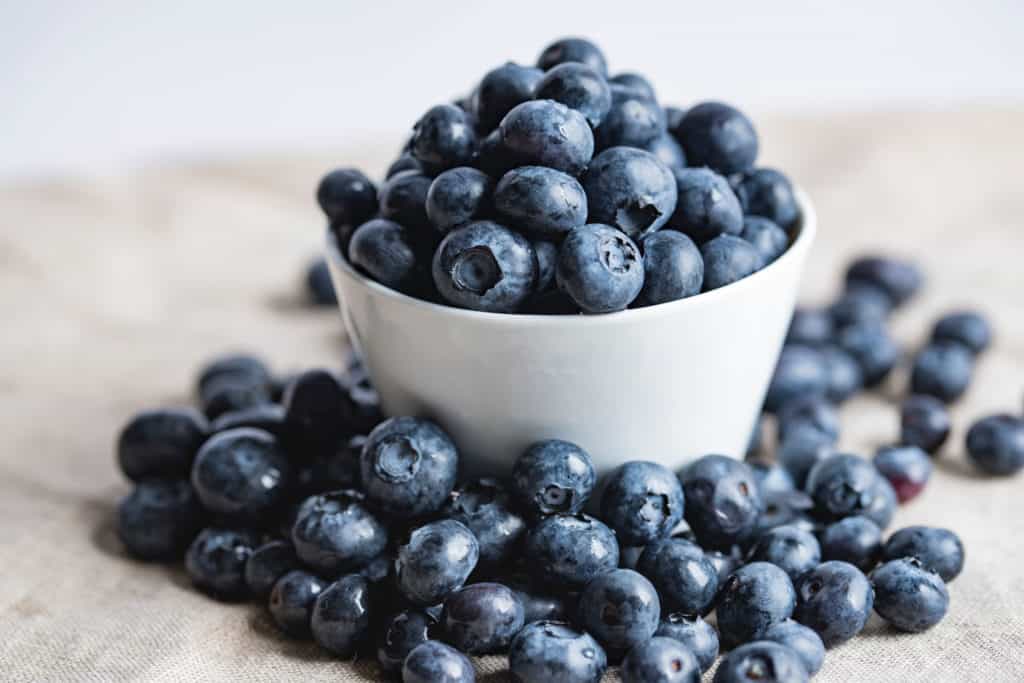
Arándano / Blueberries
Blueberries have been consumed for centuries for the treatment of many diseases including ailments related to the urinary tract.
Although this century-old practice is still existent today, blueberries are eaten because of their high antioxidant properties, fiber, vitamin C, K, and low caloric value.
Daily consumption of fresh Chilean fruits like blueberries is believed to reduce the risks of heart ailments, reduce blood sugar levels, improve vision, lower cholesterol and blood pressure levels, and delay aging.
Pickled Blueberries
Blueberries are small, round in shape, and have a natural shimmery coating. Most blueberries are juicy with a sweet and a little acidic taste.
Blueberries are available in the market in different forms: dried, canned, pureed, and are often used in baking.
A versatile Chile fruit, Blueberries are widely grown in South America particularly in Chile and Peru.
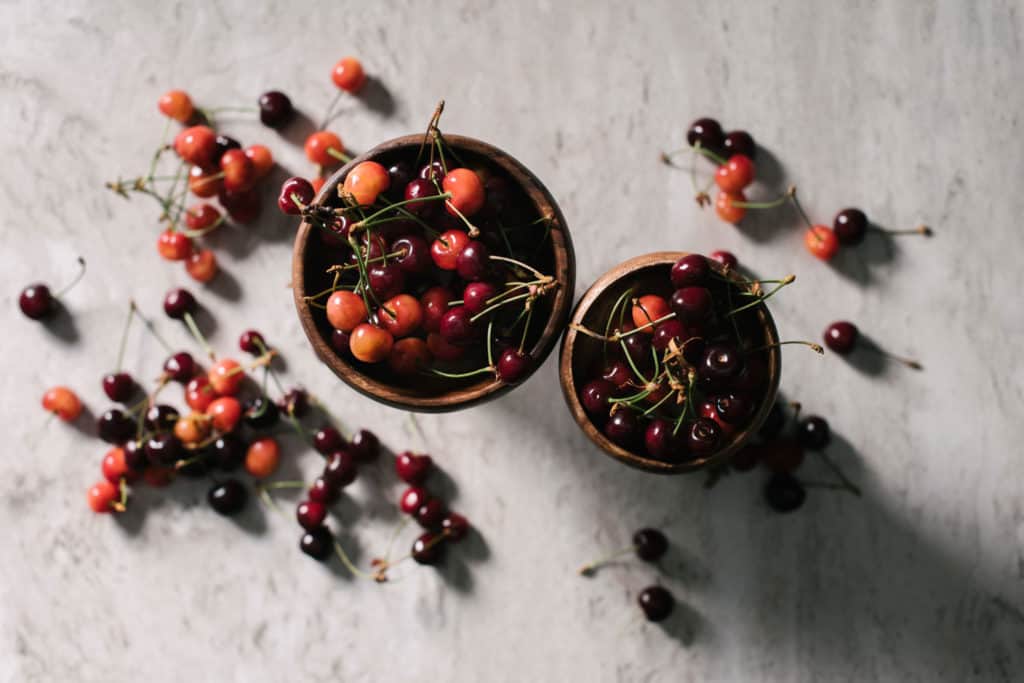
Cerezas /Cherries
These small red cherries are not only popular for baking cherry pie but also packed with vitamins, minerals, and antioxidants beneficial for your health.
Cherry trees were said to have originated in Southwest Asia before cultivation spread throughout the world.
Cherries are not only an excellent choice for confections, cheesecake, and processing, but for a good for preventing cardiovascular diseases, preventing cancer, and used to treat gout.
Brazilian Fruits
Chile is not only growing this beautiful stone fruit but also was the top cherries exporter in the world in 2019.
From ice cream toppings to jellies, jams, and preserves, these ruby-red fruits will sweeten your day.
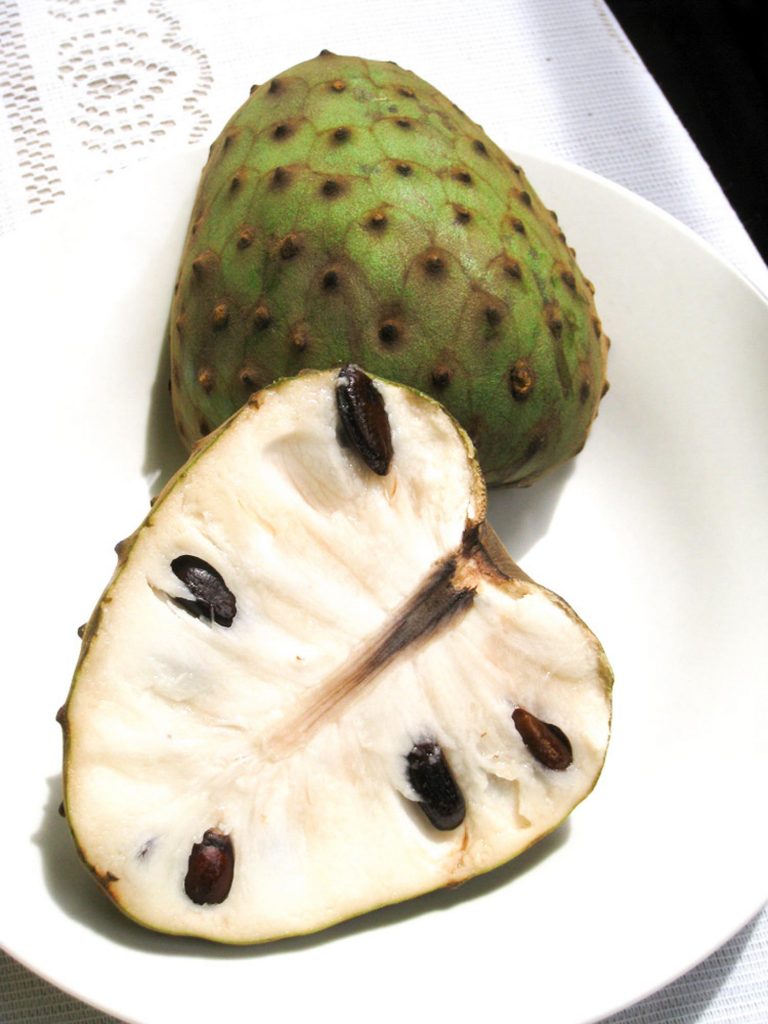
Chrimoya / Custard Apple
Chrimoya, chirimoya, also spelled as cherimoya is a heart-shaped fruit in green color with velvety skin. It’s also a popular Guatemalan fruit, known as annona.
This favorite fruit in Chile has a soft and creamy-like texture that melts like custard hence the popular name custard apple.
The custard-like pulp tastes like a blend of banana, papaya, coconut and vanilla.
The word “cherimoya” refers to the Incan word meaning “cold seeds” for seeds only grow in altitudes up to 6,000 feet.
Custard apples are widely grown in subtropical regions like Central and South America, Australia and South Asia.
It’s one of the most common Ecuador fruits throughout the country. And you can find it as very popular Thai fruits.
Ripe custard apples can be eaten fresh, blended into shakes and smoothies, smashed and added with coconut milk, baked into tarts, or mixed with yogurt.
Just a 300 gram consumption of custard cake will give you 170 calories, vitamin C, phosphorus, calcium, and niacin.
Traditional Chilean Food
Coquitos (Palm Tree Nuts)
Coquito nuts are fruits from Chilean palm trees. Coquitos are round and hard with a hairy and dark brown exterior like a coconut husk.
The nut is white, thick, dry, and crunchy with a sweet taste and almond-like flavor.
Coquito nuts are popular in Chile consumed as snacks, eaten raw, crushed, and mixed into salads, ice cream custard, or yogurt topping, or dipped in chocolate.
The crushed nuts can also be added to cake, brownie, and cookie batters, or incorporated into other tropical deserts.
In addition, coquito nuts provide the following nutritional values: vitamin C to boost system immunity and reduce inflammation, vitamin K for faster wound healing, phosphorus to strengthen teeth and bones, vitamin A, magnesium, fiber, and zinc.
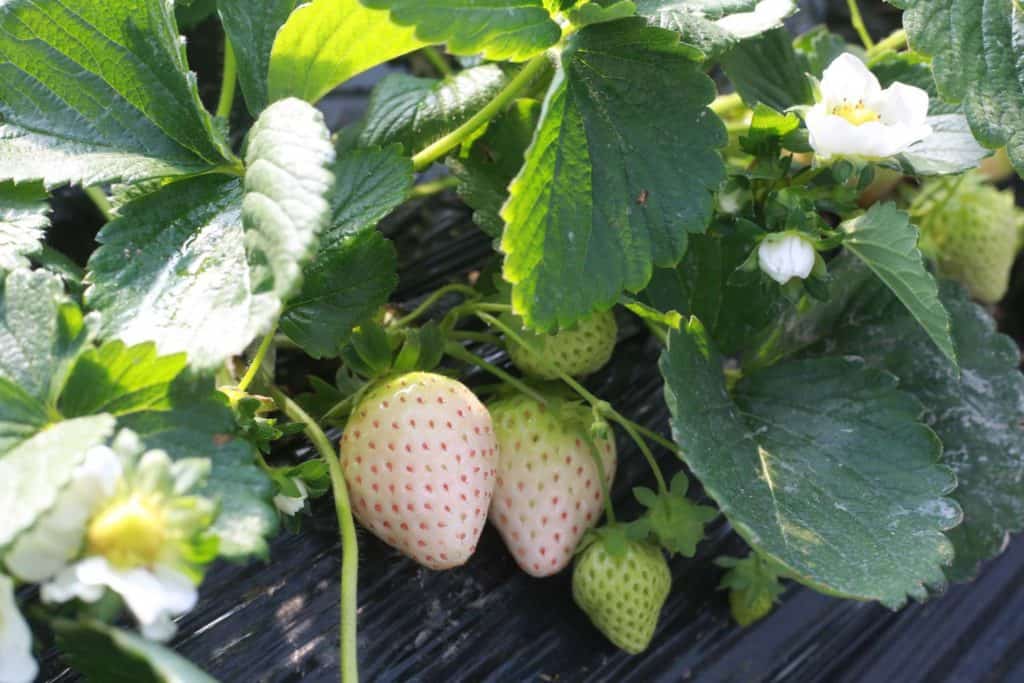
Frutilla / Chilean White Strawberry
Chilean white strawberry, beach strawberry, or Fragaria chiloensis is native in North America, South America, and Hawaii.
And through migratory birds, the seeds have dispersed the species from these regions to the mountains of Chile and Argentina.
White strawberries have been growing on this side of the world for centuries. Frutilla Chilena has a pale to light pink flesh with points or red or rose and is sweeter than red strawberry.
Strawberry Tart Recipe
This type of strawberry tastes like pineapple and has a candy-like aftertaste. It is a good source of vitamin C for increased collagen production, reducing inflammation, and strengthening the immune system, vitamins A, K, and E.
White strawberry might be popular but is rarely available in the market unlike other fruits in Chile.
Chilean white strawberry is highly favored as gifts during special occasions because of its rarity.
However, frutilla or Chilean “white” strawberry is the same as red strawberry that can be consumed straight, blended for shakes and smoothies, cake topping, tart, and other confections.
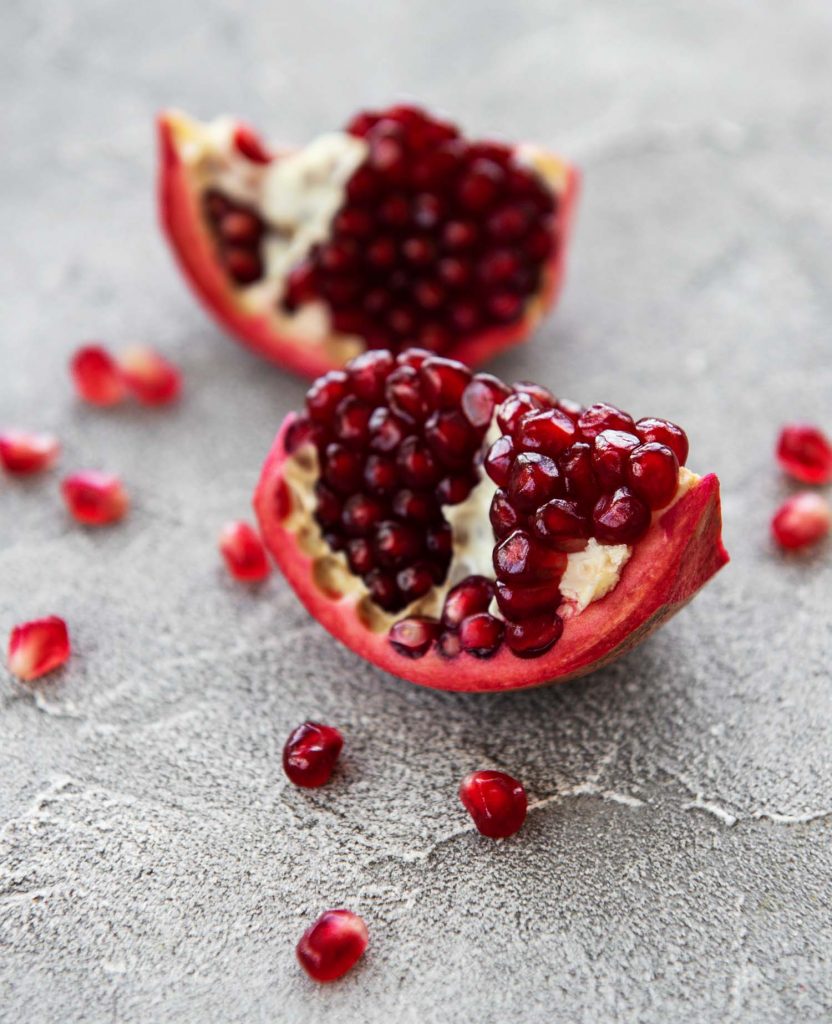
Granada / Pomegranate
Granada or better known as pomegranate is considered the crown jewel of the fruit kingdom.
The rounded fruit comprised 2 layers: the outer covering and the soft inner layer called mesocarp. The mesocarp has several chambers that have bright red fleshy seeds that are edible.
Although commonly used for its juice and seeds, granada can also be used for baking, colorful addition to salads, or to sweetened yogurt, or to make gelato, the same with most-loved Chilean fruits.
Granada juice can also be used to marinate beef, or make smoothies.
It has been part of different cultures and religious traditions. In ancient traditions like Iranian Yalda night, people gather together during the winter solstice and eat pomegranate to celebrate the light’s triumph over darkness.
In Iranian Christianity, pomegranate is also believed to be the real forbidden fruit. It’s common in Rosh Hashana food and you’ll find it in Holi food in India.
Pomegranate is originally from the Middle East but you can find it all over the world, it’s even one of the most popular fruits in Malaysia.
Ancient cultures also utilized Granada to treat skin disorders, intestinal parasites, and other digestive disorders.
Apart from its antioxidant compounds, it also has a sweet and aromatic fragrance, hence is it a popular ingredient for beauty products.
Pebre Recipe
Kiwifruit
Kiwi or kiwifruit is native to Taiwan and mainland China and then spread to New Zealand where it was first commercially cultivated in the year 1904.
Kiwifruit originally has a Chinese name (yang tao). But this was changed in 1959 to Kiwifruit, after New Zealand’s national bird.
Kiwi is approximately as big as a chicken egg in brownish-green color.
The fruit is covered with soft fuzz or velvety texture but can be removed using a peeler or a knife.
A kiwifruit flesh is crunchy, sweet, and tangy, similar to a strawberry, rich in potassium, vitamin C, folate, and antioxidants.
Kiwi is often eaten fresh and raw. But it can also be mixed with other fruits and salads.
The flesh can be mixed into yogurt, sherbet, or used for baking tarts, pies, and other hot food or desserts.
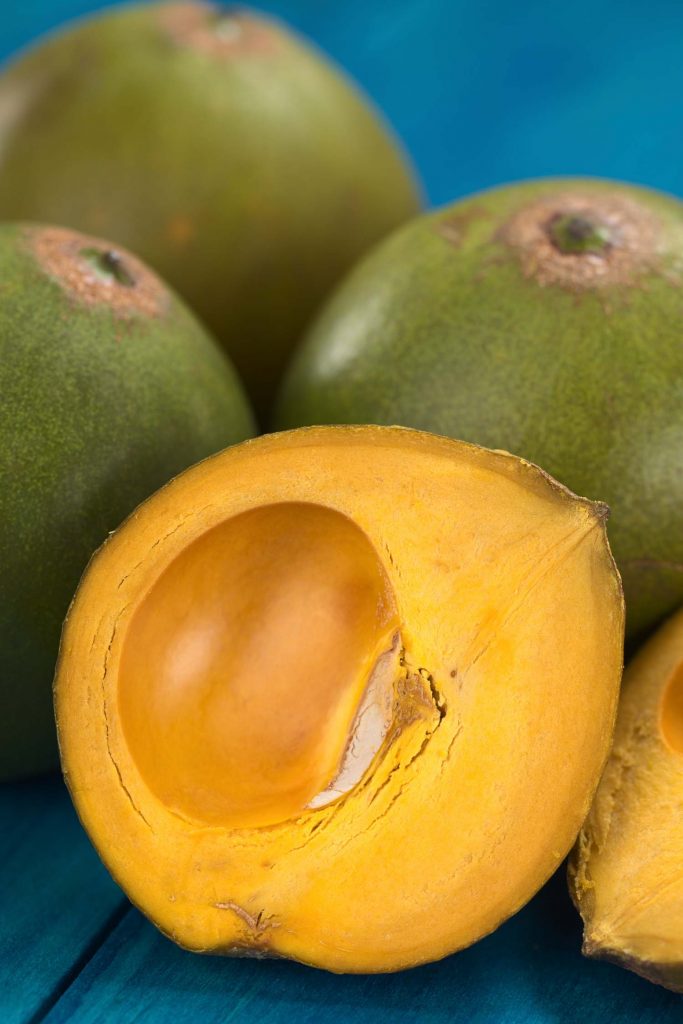
Lúcuma | Egg Fruit
Lúcuma has been consumed for centuries, native to the Andean valleys in South America and is a common Peru fruit. This exotic fruit has been a staple for the Incas and has been part of their culture and celebrations.
This Chilean fruit looks like a cross produce of pear and mango but it has the texture of a cooked egg, which is why it’s give that name in English.
Lúcuma helps stabilize blood sugar levels, packed with vitamins and minerals, and rich in antioxidants.
The fruit flesh tastes creamy, tangy, similar to citrus fruits.
Lúcuma is great for smoothies, pudding, shakes, ice cream, and sweetening yogurt.
Although it’s not common in markets it’s a popular fruit in Sri Lankan backyards. They also often use it for desserts.
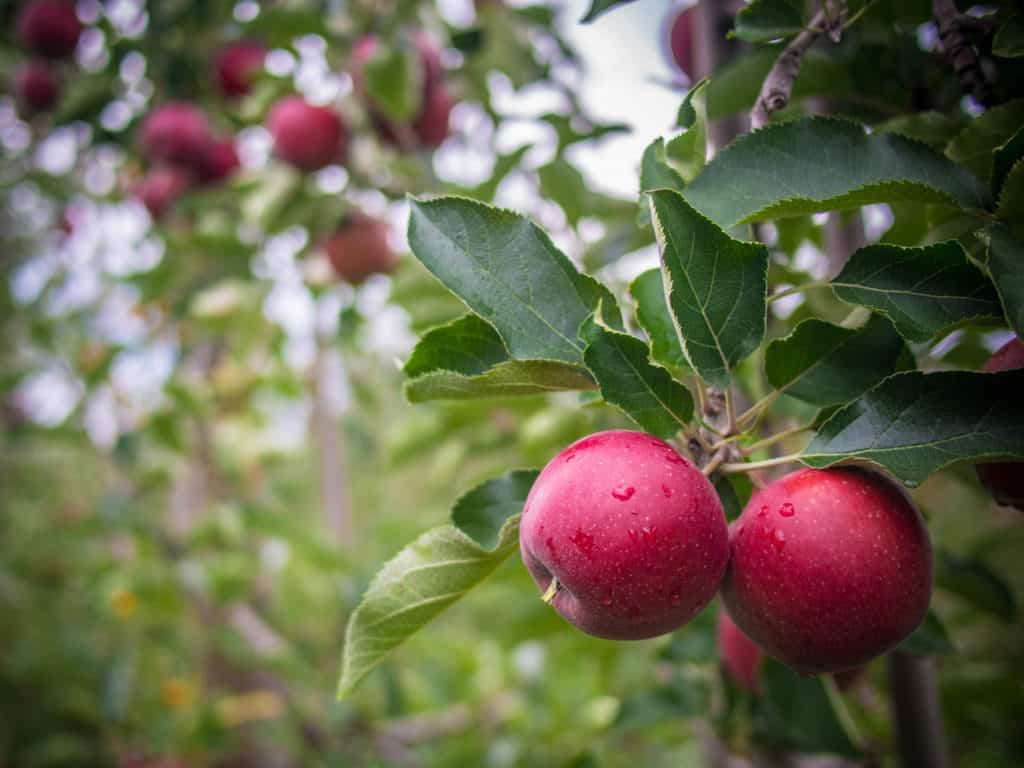
Manzana /Apple
An apple a day keeps the doctor away, even if it’s this easy recipe for Irish apple cake with whiskey cream.
Eating apples is good for your heart, prevents cancer, and aids in weight loss. Fruits from the apple tree taste naturally sweet and slightly astringent.
Aside from eating it raw, apples are also good for salads, pies, drying, while juices can be reduced for sauces, or used in vinegar production.
Fruits in Nicaragua
Maqui Berry / Chilean wineberry
Maqui Berry is another Chile fruit that grows wild. It is similar to the acai berry.
The fruits have an attractive dark purple color like grapes used for personal consumption and medicinal purposes.
Loaded with antioxidants, maqui berry is good to treat inflammations and repair cell damage. It also reduces the risks of cancer, diabetes, and heart diseases.
Maqui berry can be eaten alone, raw, or can be made into smoothies, desserts, and other beverages.
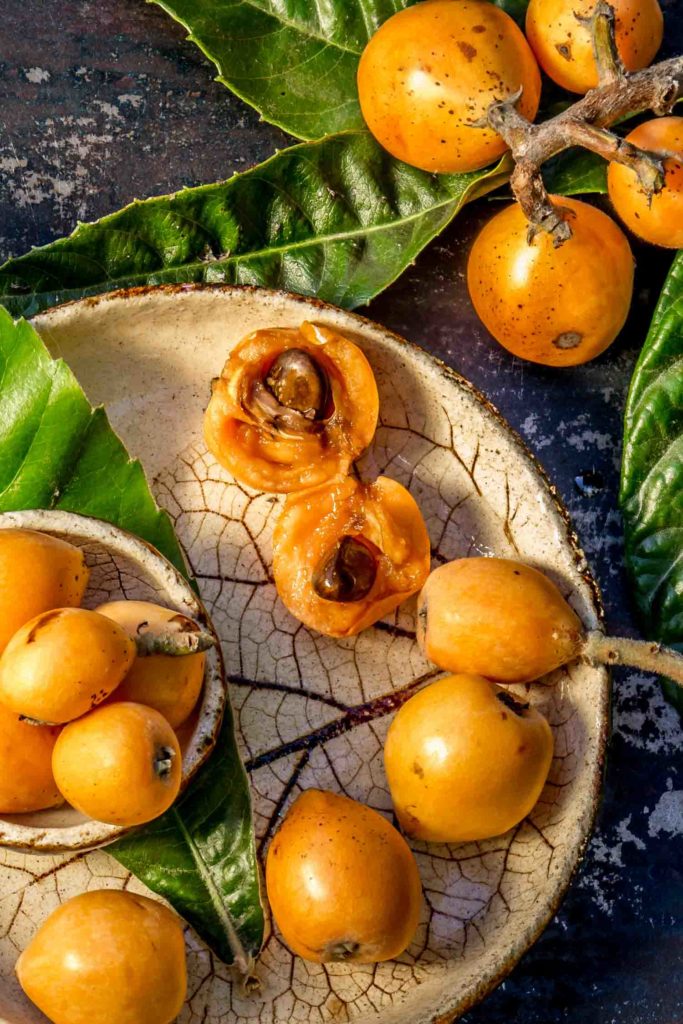
Nispero / Loquat
A native to China (like most Chilean fruits on the list) the evergreen tree has been grown in different regions of the world and is a popular Costa Rican fruit.
In traditional Chinese medicine, parts of the nispero tree are used to treat cancer, inflammation, diabetes, chronic bronchitis, and cough.
The pear-shaped fruit has soft brown-orange skin with reddish pulp. The flesh is soft and has a distinct texture.
Nispero may be small but naturally sweet and delicious, ideal for making jams and other preserves.
The ripe fruit can also be mixed in salads while the slightly immature fruits are great for baking tarts or pies.
Caqui / Persimmon
Caqui, or persimmons, are originally from China and Japan but now grown in Valparaíso and O’Higgins.
It has become a very popular Chilean fruit because of its nutritional properties. It is high in vitamins A, E and C as well as antioxidents.
It’s also one of the common Laos fruits and Vietnamese fruits.
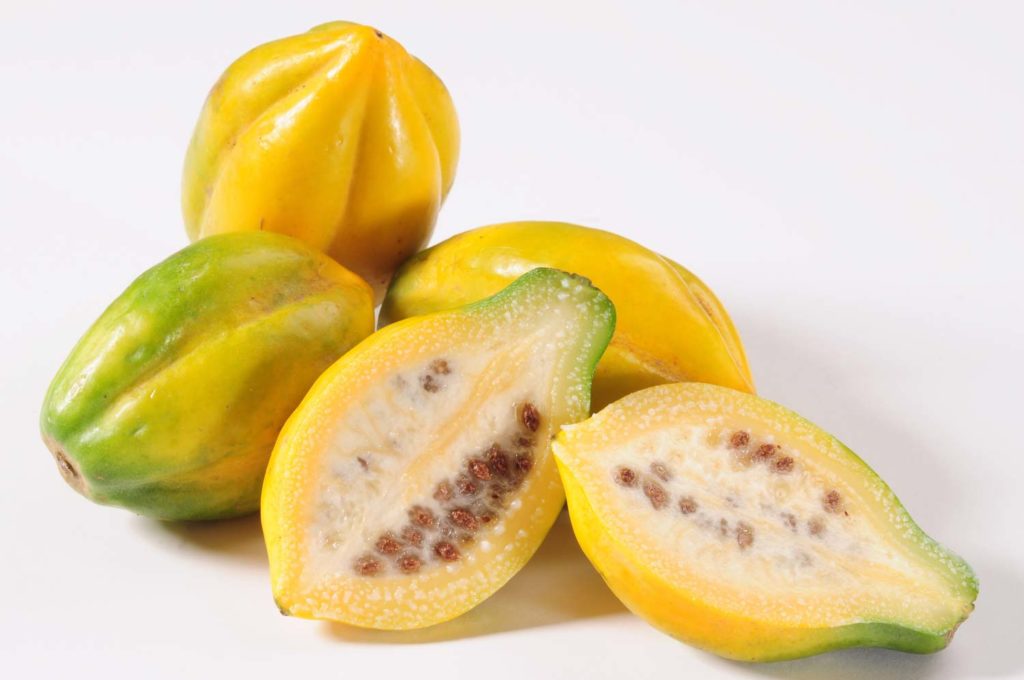
Papayuelo / Mountain papaya, Chilean papaya, mountain pawpaw
This rare type of papaya is native to the Andes Mountain, and a common Colombian fruit.
This small, yellow-orange (sometimes rare purple and reddish) staple fruit in Chile has a jelly-like flesh, with a little sweet and subtle flavor.
It can be eaten raw because it is sweet and tangy.
It was given the name mountain papaya because it looks like a papaya on the outside. Yet inside it has white pulp with black seeds.
Like the other fruits in Chile on the list, papayuelo is eaten fresh or used for making jams and jellies.
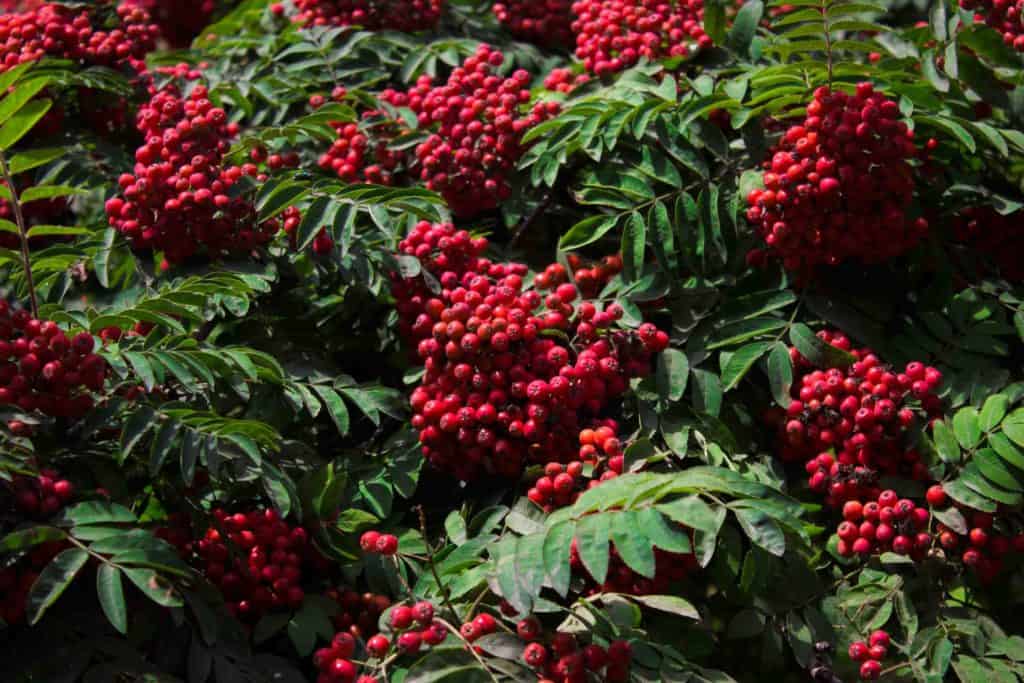
Murtilla / Chilean Guava
This fruit in Chile is known by one name – murtilla. But it actually has many names around the world.
You’ll find it in Chilean Patagonia and southern Argentina as murtilla or murta. It’s also known as Chilean guava, which isn’t so far off as it is a member of the guava family.
It’s one of the more rare fruit in Chile. However, keep your eye for murtado, which is a traditional Chilean liqueur. Murtillas are covered in sugar and topped with aguardiente, a sugar cane alcohol.
In New Zealand it’s also known as New Zealand cranberry, Tazziberry in Australia and also known as Ugniberry. And while it is edible, it’s known as an ornamental plant in England.
Nalca / Chilean Rhubarb
Nalca grows over one meter tall in southern Chile, Argentina and on Chiloé island. It is often considered an ornamental plant with a flower. But the stalks can be used, much like traditional rhubarb.
The leaves, which are called pangue, are also used in curanto, which is a traditional dish in the Los Lagos Region.
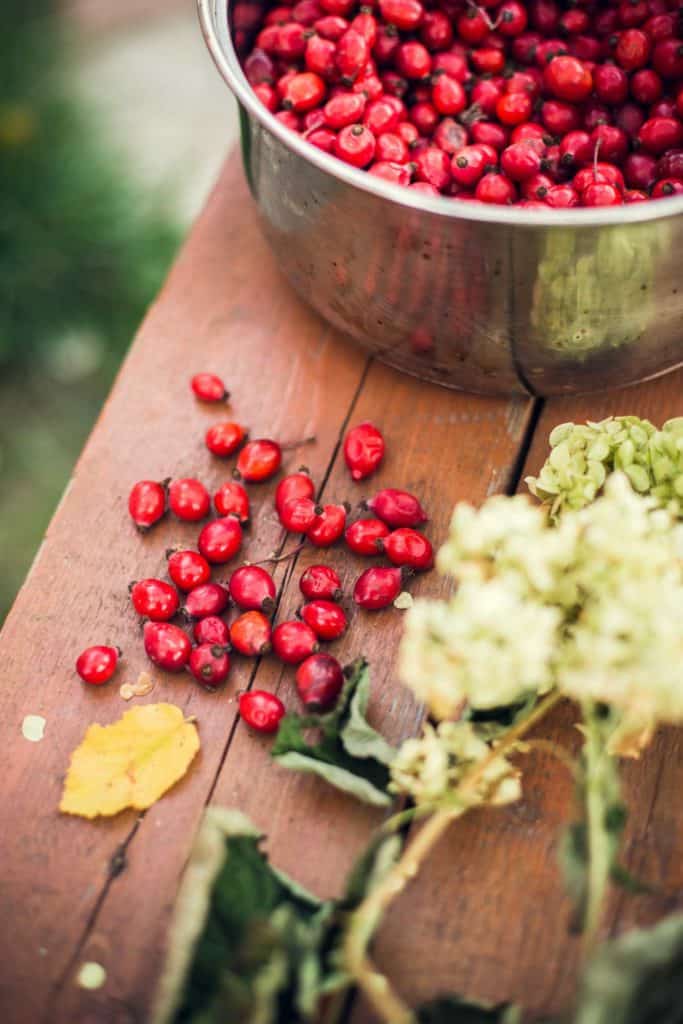
Rosa Mosqueta / Rose hip
Rose hip is a fruit that has gained attention in the health and beauty industry.
Fruits are usually in red-orange, rare yellow, and black depending on the variety.
Rose hips are an excellent source of vitamins A, B5, C, and E. lycopene and beta carotene.
Eating rose hips does not only nourish your body with vitamins and nutrients, but also replenish your skin cells, and aids in weight loss.
Chupones / Hardy Pineapple
Chupones are an edible fruit endemic to Chile. They grow in southern central Chile in a bromeliad plant and prodice a fruit that is sometimes called hardy pineapple in English.
But that really doesn’t do justice to this Chilean fruit’s flavour which is often described as pineapple, kiwi and coconut combined.
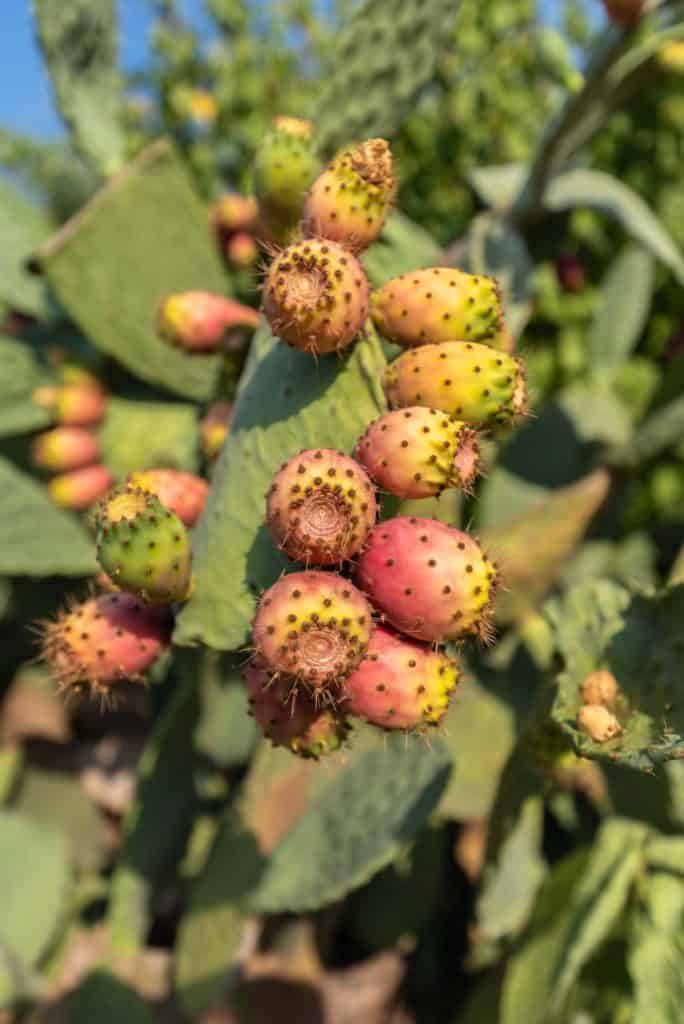
Tuna / Prickly Pear
Pickly pear grows in arid places throughout Latin America, where cacti grow. It looks like an oval the size of a pear.
However, the skin is thicker and ranges from yellow/green to orange red depending on where it’s grown and time of year.
It may be obvious but don’t eat the skin. Tuna needs to be peeled. But you can definitely eat the seeds.
Inside it is bright pink or red and is so sweet. It has a berry-like flavour but also the sweetness of figs.
It’s common to find it as a juice but I prefer to eat it as a fruit. Just cut off the ends and peel the fruit.
Tuna fruits are commonly used for making jams, jellies, and preserves.
The flesh is also used to sweeten yogurt, ice cream flavor, juices, and other sweets.
Prickly pear is also a good source of phosphorus, calcium, and other essential vitamins.
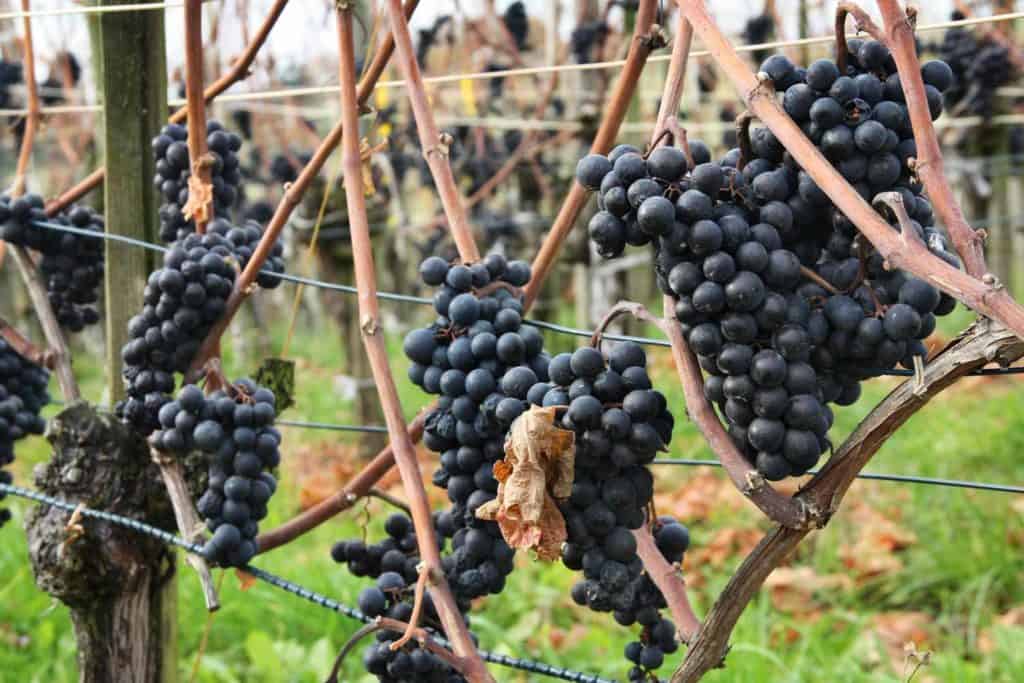
Uvas / Grapes
Grapes grow in cluster and are available in various colors: green, red, white, black, dark blue, and yellow.
Uvas Grapes have seeds, thin skin, crunchy with a slightly tart flavor. The nutrients found in grapes may help prevent cancer, diabetes, allergies, constipation, lower blood pressure, and boost heart health.
Uvas Grapes are used for winemaking, salads, tarts, toppings for pancakes, yogurts, desserts, and other culinary innovations.
What Chilean fruits did I miss? Let me know in the comments below!
Pin it: Fruits in Chile
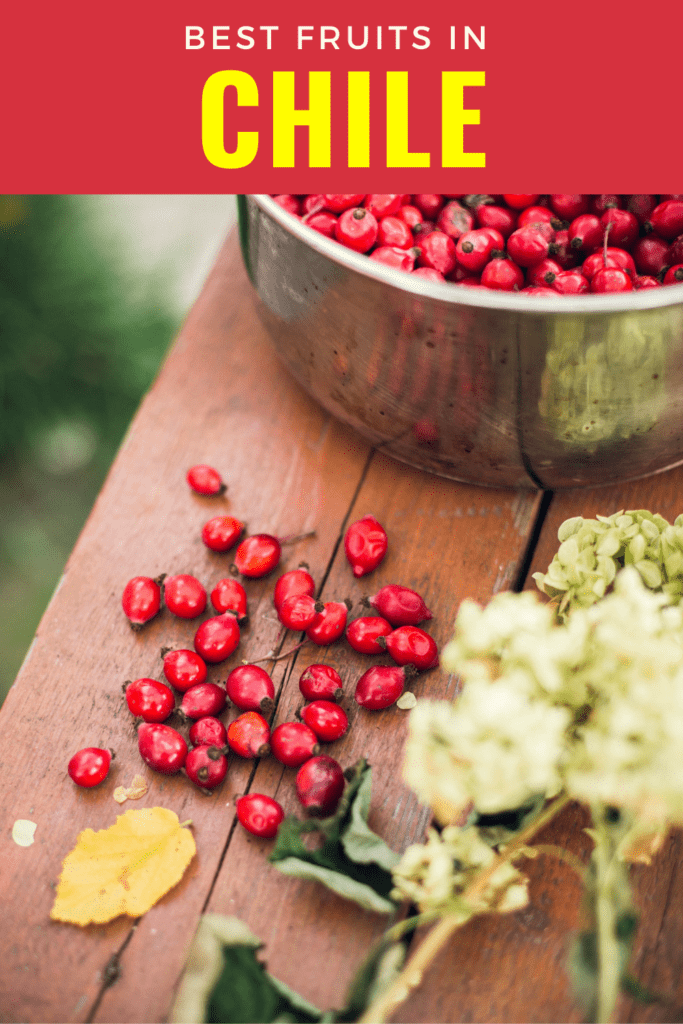
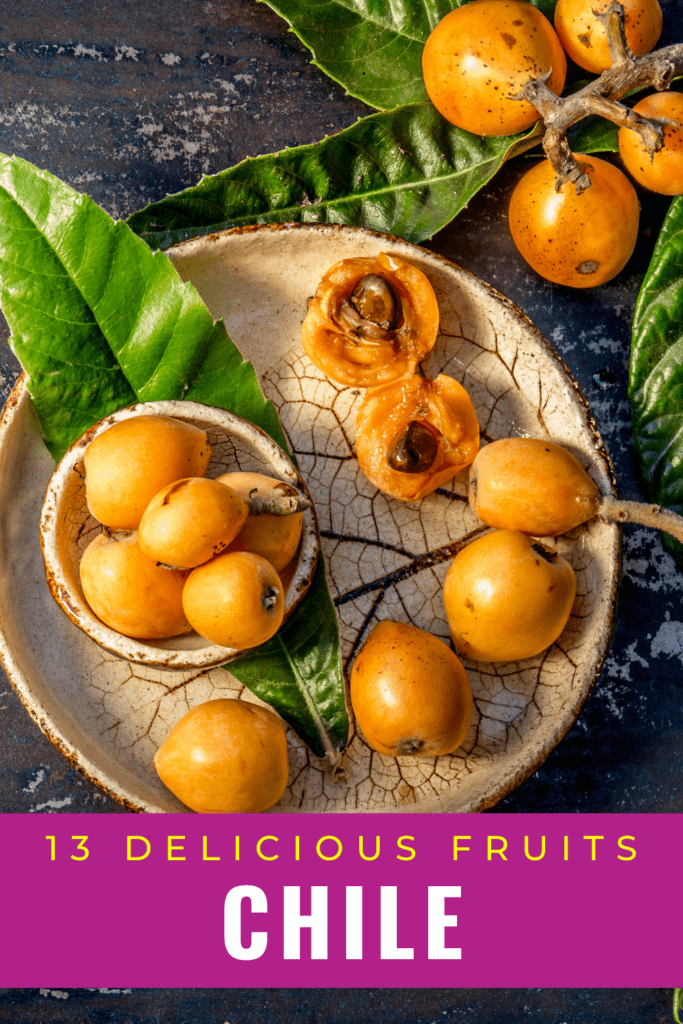
You are aware than most of those fruits grow in tropical weather and in the jungle, right? Can you point where are the Chilean jungles?
No jungle needed for these fruits.
Blueberries, cherries, fruitilla in fact most berries (including Maqui berries) grow in cooler conditions. As do apples, rosehip and grapes. I know this because they all grow in my agricultural province of Canada
As for the other fruits, tuna grows in northern Chile where there are desert like conditions. Lucuma is a cool weather coastal fruit found in Chile and Peru. Coquito in the coastal valley. Cherimoya specifically in the lower Aconcagua Valley.
Mountain papaya in the Andes. Nispero grows in mild temperatures not in a jungle but Viña del Mar and Santiago. Pomegranates in the foothills of the Andes.
Did I miss any? Most fruits in South America are not endemic but either come down from Mexico/Central America or over from Asia. That doesn’t mean they can’t grow here.
One thing I really miss from Chile are PIÑONES!
Is there any other place besides in the South of Chile where it can be found?
Thank for making me salivate with those pictures 😋😋😋
I meant THANKS!
Oh thank you! So piñónes look like pine cones in Canada. Which is not surprising as a lot of Chilean fruit also exists in Canada. I looked up it’s genus species and they are pine nuts. They are very common in Italian cooking, and somehow I didn’t realize that pine nuts. But there are many different pine nuts, depending on what type of pine tree. In Chile the scientific name of the tree is Araucaria araucana, which is Monkey Puzzle Tree or Chilean pine in English. It looks like you can only find this type of tree in the Andes of Chile and Argentina.
Sad news, while it is the national tree of Chile, it’s actually endangered.
Thanks for the question, I learned a lot today!
That’s what makes them extraordinary and unique in flavors!
You missed quillaves. It grows on the tip of wild cactus, first it is a flower, then a seed and when it opens up is the time to eat it,
The inside is a similar to the dried fig but the flavor is undescribable.
That sounds incredible, I’ve never seen it. Do you know it’s name in English or its scientific name?
There are two fruit from cactus where I live ( Valle de Elqui) the guillave (Trichocereus chiloensis) and the Copao (Eulychnia breviflora) both edible, but the guillave is rarely sold in any major market, even when is sweet and tasty. I’ll leave a lik to a yt videos of a cooking show (in spanish) where they show them both, which was filmed close to where I used to live. All the best. https://youtu.be/VfQzWnDoAiE
falto Melon-Pepino that winter fruit yellow purple outside …yellow inside..Amazing
Oh si, es como pepino dulce en Ecuador. Gracias, lo agregaré
I think that you could also mention Melon Tuna and Melon Calameño. I don’t their English names though. Saludos!
I don’t know their names***
Some others that you might not know unless you spend time in the campo down south: chupones (Greigia sphacelata), murtilla, and nalca. Also, rosehips are called rosa mosqueta. And Kaki/Mancaqui are also delicious!!!
Thank you so much for the additions, I’ll add them to the post.
Piñones from Araucaria native trees grow up on the south of Chile. Is like de castañas another fruit we ate those fruits on winter time ., In a raining and freeze days. All the fruits you show us in the note made me to remember my infant and young life there. We took “maki” from the trees with my siblings and also we help to our mother to pickup another summer fruits like maki as moras , grosellas she needs to cook for our winter jelly thank you for make me taste my fruits one more time.
Hi! Great articule but I (personally) would’t recommend eating raw papayas, they will DESTROY your mouth haha (high amount of Proteolytic enzymes, it is even recommended to wear gloves when peeling them because some people’s hands hurt) . You have to cook them to be safe, you can try to eat them really ripe, but I like them cooked.
Interesting knowledge, everyone in Latin America eats them raw, I have never heard about this issue.